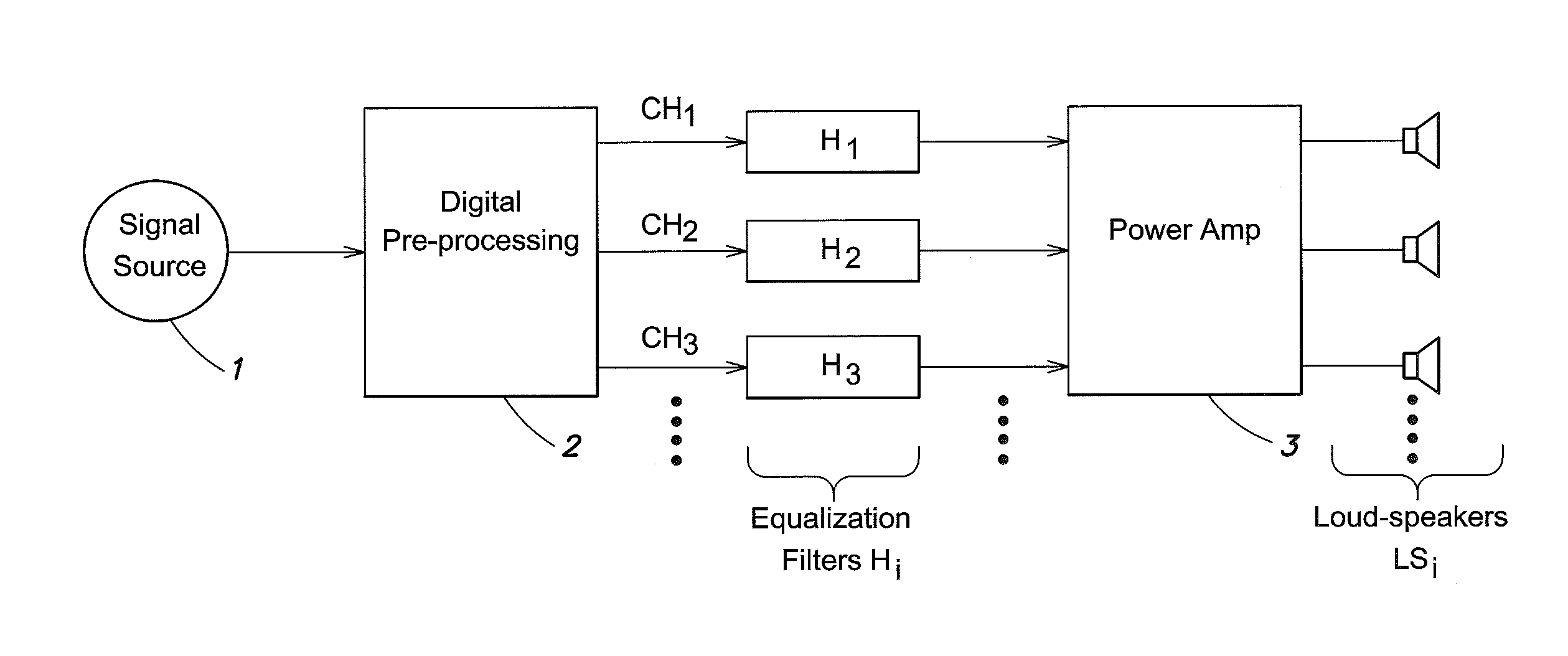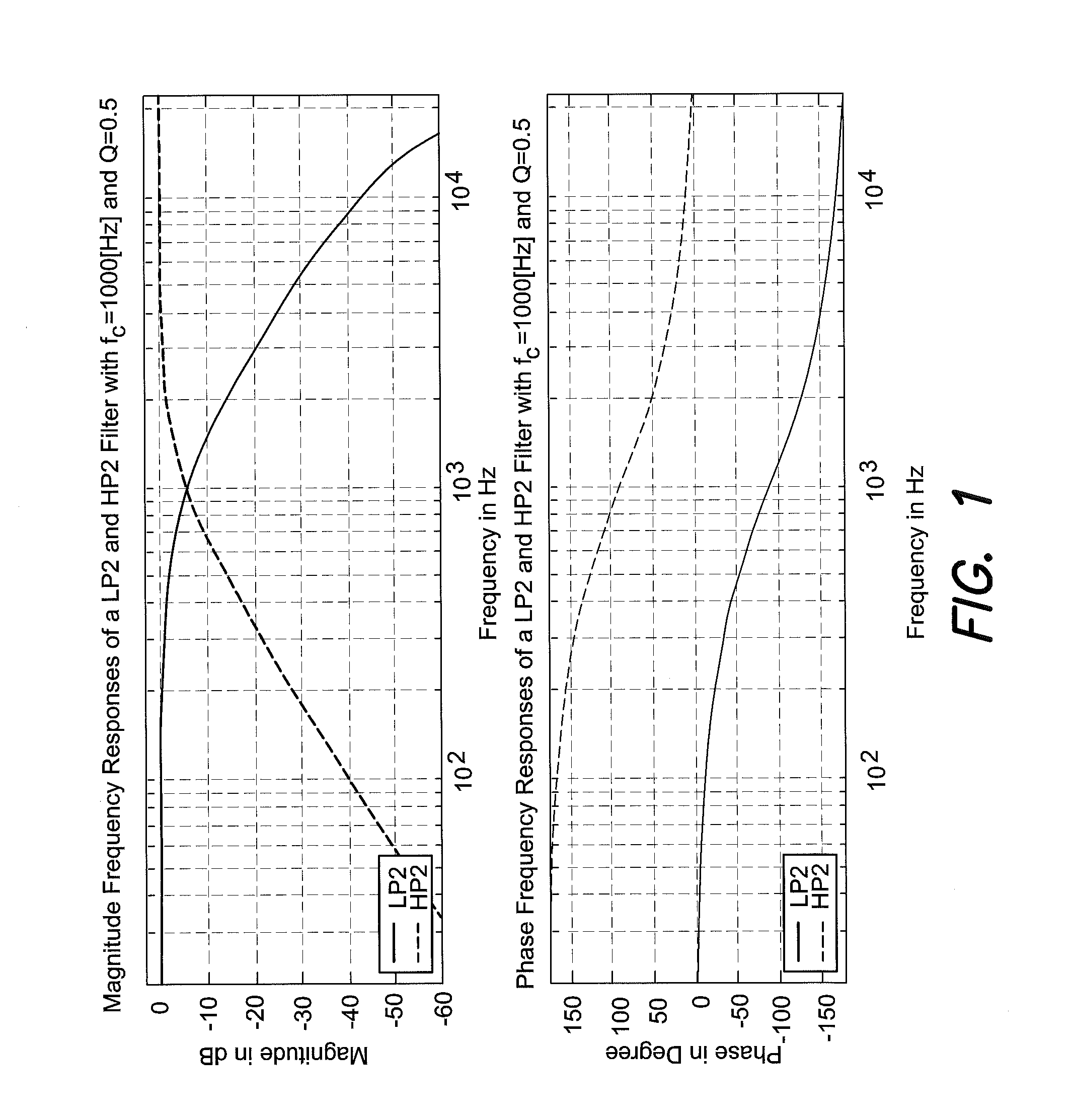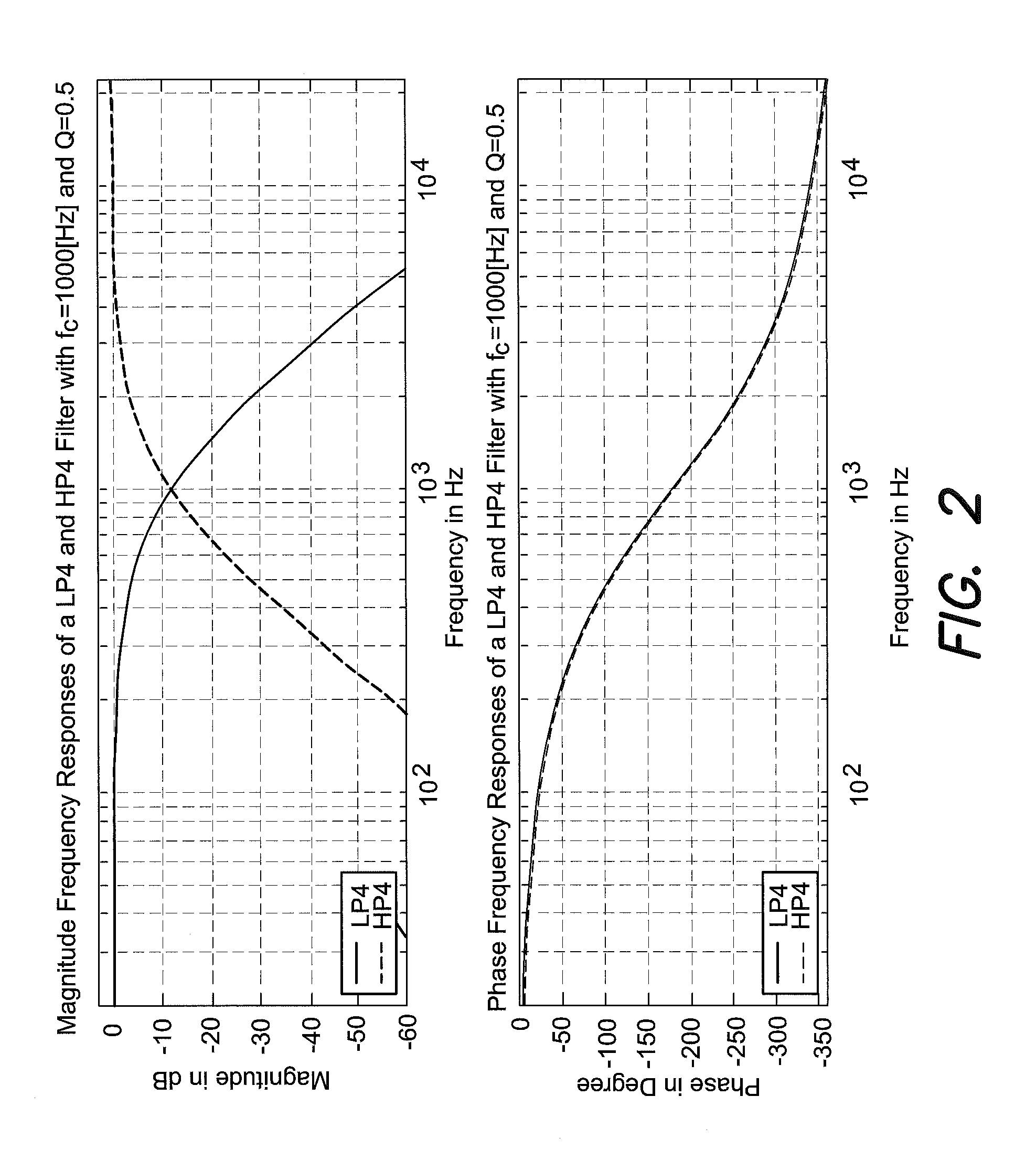Digital equalizing filters with fixed phase response
a technology of equalizing filter and phase response, applied in the direction of impedence network, digital signal tone/bandwidth control, transducer casing/cabinet/support, etc., can solve the problems of linear phase filter and undesired properties
- Summary
- Abstract
- Description
- Claims
- Application Information
AI Technical Summary
Benefits of technology
Problems solved by technology
Method used
Image
Examples
Embodiment Construction
[0019]For the use as equalization filters (digital or analog) filter structures should pro-vide a few parameters via which the filter characteristic can be adjusted. That is, the magnitude response over frequency may be adjusted by tuning only one or a few parameters. One example of commonly used filters are second order low-pass and high-pass filters which may be characterized by the following parameters: cut-off frequency (symbol fC), Q factor (symbol Q), and broadband gain (symbol G). In a digital implementation such filters are often implemented as biquadratic infinite impulse filters (biquad IIR filters). FIG. 1 illustrates the bode plots of a second order low-pass and a second order high-pass filter, each filter having a broadband gain G of zero decibel (G=1 or G=0 dB), a cut-off frequency fC of one kilohertz (fC=1 kHz) and a Q factor of 0.5. It should be noted that the phase responses of the two filters (low-pass and high-pass) are equal except for the constant phase shift (o...
PUM
 Login to View More
Login to View More Abstract
Description
Claims
Application Information
 Login to View More
Login to View More - R&D
- Intellectual Property
- Life Sciences
- Materials
- Tech Scout
- Unparalleled Data Quality
- Higher Quality Content
- 60% Fewer Hallucinations
Browse by: Latest US Patents, China's latest patents, Technical Efficacy Thesaurus, Application Domain, Technology Topic, Popular Technical Reports.
© 2025 PatSnap. All rights reserved.Legal|Privacy policy|Modern Slavery Act Transparency Statement|Sitemap|About US| Contact US: help@patsnap.com



